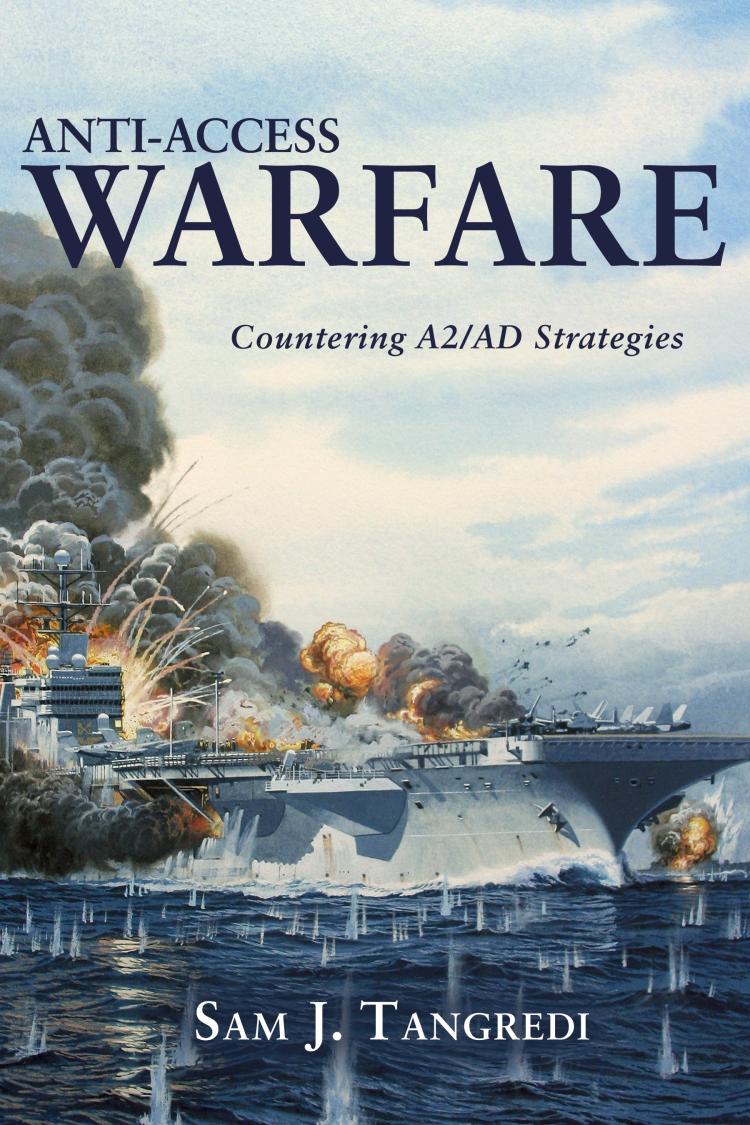Anti-Access Warfare
Countering A2/AD Strategies
- Subject: eBook Editions | Strategy | Spring 2023 Catalog | General Military & Naval History | 2024 Paperback Sale
- Format:
Softcover
- Pages:
320pages
- Published:
February 15, 2023
- ISBN-10:
168247898X
- ISBN-13:
9781682478981
- Product Dimensions:
9 × 6 × 1 in
- Product Weight:
15 oz
Overview
This is the first book to examine the concept of anti-access and area denial warfare, providing a definitive introduction to both conceptual theories and historical examples of this strategy. Also referred to by the acronym "A2/AD," anti-access warfare has been identified in American strategic planning as the most likely strategy to be employed by the People's Republic of China or by the Islamic Republic of Iran in any future conflict with the United States. While previous studies of the subject have emphasized the effects on the joint force and, air forces in particular, this important new study advances the understanding of sea power by identifying the naval roots of the development of the anti-access concept.
The study of anti-access or area denial strategies for use against American power projection capabilities has strong naval roots-which have been largely ignored by the most influential commentators. Sustained long-range power projection is both a unique strength of U.S. military forces and a requirement for an activist foreign policy and forward defense. In more recent years, the logic of the anti-access approach has been identified by the Department of Defense as a threat to this U.S. capability and the joint force.
The conclusions in Anti-Access Warfare differ from most commentary on anti-access strategy. Rather than a technology-driven post-Cold War phenomenon, the anti-access approach has been a routine element of grand strategy used by strategically weaker powers to confront stronger powers throughout history. But they have been largely unsuccessful when confronting a stronger maritime power. Although high technology weapons capabilities enhance the threat, they also can be used to mitigate the threat. Rather than arguing against reliance on maritime forces-presumably because they are no longer survivable-the historical analysis argues that maritime capabilities are key in "breaking the great walls" of countries like Iran and China.
The study of anti-access or area denial strategies for use against American power projection capabilities has strong naval roots-which have been largely ignored by the most influential commentators. Sustained long-range power projection is both a unique strength of U.S. military forces and a requirement for an activist foreign policy and forward defense. In more recent years, the logic of the anti-access approach has been identified by the Department of Defense as a threat to this U.S. capability and the joint force.
The conclusions in Anti-Access Warfare differ from most commentary on anti-access strategy. Rather than a technology-driven post-Cold War phenomenon, the anti-access approach has been a routine element of grand strategy used by strategically weaker powers to confront stronger powers throughout history. But they have been largely unsuccessful when confronting a stronger maritime power. Although high technology weapons capabilities enhance the threat, they also can be used to mitigate the threat. Rather than arguing against reliance on maritime forces-presumably because they are no longer survivable-the historical analysis argues that maritime capabilities are key in "breaking the great walls" of countries like Iran and China.



